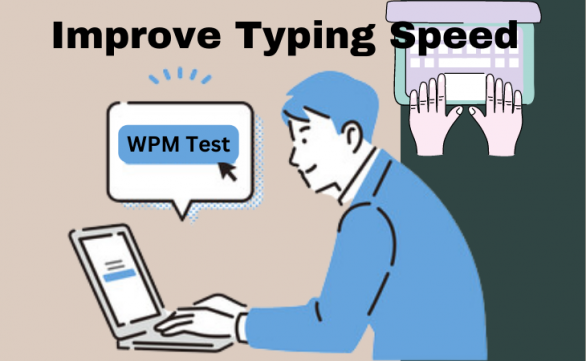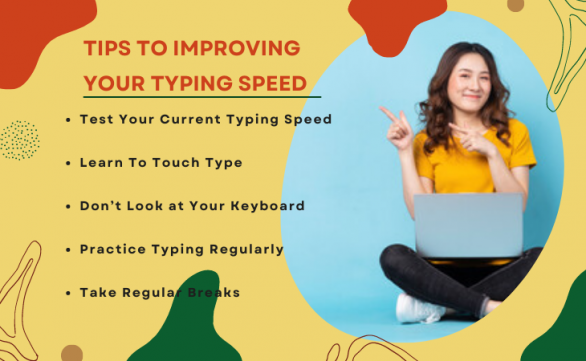|
日時未定 How To Improve WPM Typing Speed詳細  It’s easy to imagine all the benefits of faster typing, such as writing up memos and documents quicker, saving time in your work and personal life, making it easier to take notes during a meeting, and even having a marketable skill. Specific jobs, such as transcription and office work, may have, or expect, a certain typing speed from their employees, so increasing your typing speed can be a marketable skill set to help you get ahead in many ways. Tips To Improving Your Typing speed 1. Test Your Current Typing Speed If you don’t know your current typing speed, take a few minutes to take one of the many free typing tests online to learn about your wpm. We recommend free typing tests. Jot this number down and see how it compares to the average typing speed of 40 wpm. From here, you can make a goal for your typing speed. 2. Learn To Touch Type Learning to touch type is the only way to improve your typing speed significantly. Touch typing is a typing technique that involves not looking at your keyboard and limiting your overall finger motion by using all ten fingers to type. Instead of typing with only your index fingers, you should be using every finger and keeping your fingers close to the home row of your keyboard when you are touch typing. 3. Learn the Proper Typing Home Row Position The middle of your keyboard is called the “home row” for touch typing because you should always start typing from these keys and continue to return to them as you type. Start by learning the proper finger placement for touch typing by learning the home row of your keyboard. Rest your fingers in a curved position and place them on the ASDF and JKL keys in the middle row of your keyboard. Most keyboards will also have a raised bump or line on the “F” and “J” keys, where your index fingers should rest, to help your fingers find your way back to these keys through touch, without looking. If your keyboard doesn’t have this feature, consider purchasing a keyboard or installing a keyboard bump on these keys to help you learn proper and quick typing. 4. Don’t Look at Your Keyboard One of the keys to learning quick touch typing is not looking at your keyboard and keeping your eyes on the computer screen. If you are trying to learn to type faster so that you can write based on notes or an email you have pulled up, you’ll also have to pause your typing to read your notes before going back to typing. This will significantly hinder your typing speed. If you find yourself looking at your keyboard while typing, tape a piece of paper over your hands so you can’t look at the keyboard while you practice typing. You can also purchase blank keys or a keyboard cover so you can’t see the letters and numbers on your keyboard while practicing. 5. Practice Typing Regularly If you’re new to typing or slow at it, it may feel uncomfortable at first. However, you must put in regular time to practice typing to improve your typing speed and accuracy. Your fingers may feel stiff and awkward when typing at first, but before you know it, you’ll be typing away with ease without a second thought. To practice typing regularly, we recommend the following practices:
6. Optimize Your Setup If you are struggling to keep your back supported or feel uncomfortable while typing, this may be due to your current desk setup. Consider the following guidelines when choosing or adjusting your setup for optimal typing. Start by making sure that your back is comfortably supported. Pick a chair that supports your back comfortably, preferably one with a curved backrest that will support your spine’s natural curve. If your lower back is hurting, consider adding a small cushion at the bottom of the chair’s backrest or choosing a chair with a cushion built in that area. Avoid reclining back in your chair to take pressure off your back. While this may feel nice initially, it can strain your neck and shoulders. Try moving your chair closer to your desk to avoid this strain and reduce the temptation to lean back in your chair. Lastly, make sure that your keyboard is at the right level. Most people have their keyboards higher than they need to have them. Ideally, your keyboard should be just above lap level. This position allows you to keep your arms and elbows at a 90-degree angle, which is ideal for faster typing and reducing strain on your wrists and arms. 7. Take Regular Breaks If you are new to typing or using all your fingers while typing, you may experience some discomfort at first. Be gentle with yourself and take frequent breaks to avoid straining your hands. Over time, you’ll develop stronger and more flexible muscles, and you won’t need to take as many breaks. If you feel that you are getting frustrated or distracted during your practice session, stop and take a five-minute break. Slow but accurate progress toward your typing goal is much better than sloppy, frustrating progress. It’s much more effective to return to your typing practice when you feel well-rested and clear-headed. ConclusionImproving your typing skills can benefit you in many ways, from giving you an advantage over other job applicants, saving you time writing memos or emails, and providing you with a wider job scope like transcriptionist, closed captioning, and taking notes during a meeting. While you practice typing, don’t forget that you can use other time-saving tools to help with some of these situations. 参加者 (1人) 興味あり (0人) 不参加 (0人)
コメント
|
|